A Fond Farewell to ROSAT
- By Maggie Masetti
- October 17, 2011
- Comments Off on A Fond Farewell to ROSAT
It’s time for me to be nostalgic about another satellite. Last time it was the Rossi X-ray Timing Explorer which I really started my career in websites/education/outreach on. This time, it’s the Röntgensatellit, or ROSAT, a German-led X-ray telescope. When I was an intern here, my first job was to add captions to our archive of ROSAT images!
ROSAT exceeded its 5-year mission by four years and was finally turned off in 1999. Now, 12 years later, ROSAT is expected to re-enter the Earth’s atmosphere sometime in October 2011 and break up.
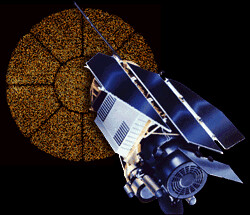
A great deal of science came from ROSAT observations. ROSAT observed stars, remnants from giant supernova explosions, galaxies, galaxy clusters, and even the Moon.

Credit: Schmitt et al. 1991, Nature, 349, 583.
ROSAT took the first X-ray image of a comet, the beautiful Comet Hayakutake, in 1996. The X-rays primarily come from a crescent-shaped region with a diameter of about 50,000 km, on the sunlit side of the comet. The directions toward the sun and of the comet motion are indicated by the arrows. No X-ray emission is detected from the nucleus, marked by the “+” sign.
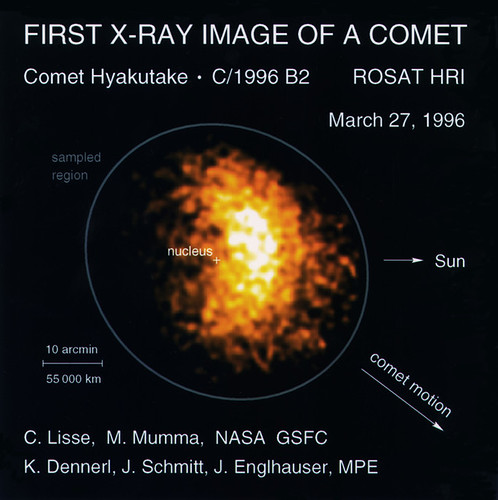
Credit: C. Lisse, M. Mumma, NASA GSFC and K. Dennerl, J. Schmitt, J. Englhauser, MPE
ROSAT carried out the first (and so far, the only) all-sky survey using an imaging X-ray telescope. The ROSAT all-sky survey resulted in a catalog of over 100,000 individual sources – an essential reference for any X-ray astronomers working today. Here is an all-sky map at an X-ray energy of .75 keV. The bright region in the center is a combination of emission from Loop I (a nearby supernova remnant) and probably emission from the “Galactic Bulge”. The Vela supernova remnant, the Cygnus Superbubble, and the Large Magellenic Cloud are also all visible.
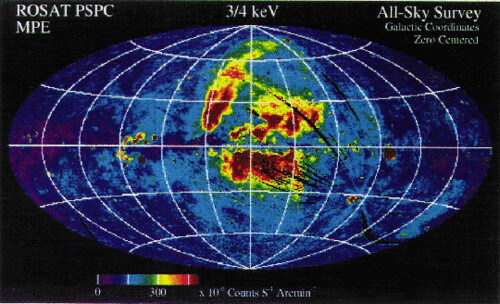
Credit: Max-Planck-Institut für extraterrestrische Physik (MPE)
It is interesting to compare the best X-ray telescopes of the ’90s with the data currently available. Compare this ROSAT image of the Coma Cluster of galaxies with the one below it, showing Chandra X-ray Telescope data of the same thing. Clearly resolution has improved in the last decade!
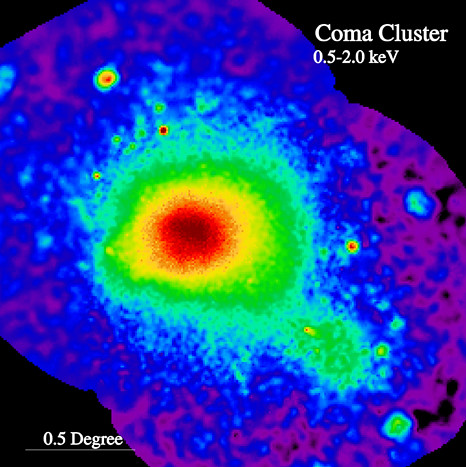
The Coma Cluster as seen by ROSAT. Credit: ROSAT/MPE/S. L. Snowden
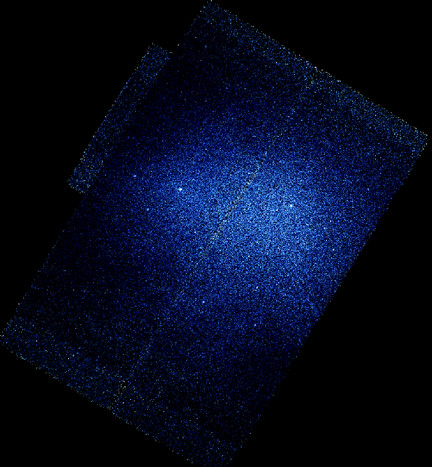
The Coma Cluster as seen by Chandra. Credit: NASA/SAO/A.Vikhlinin et al
And soon ROSAT will be gone for good. It’s expected to re-enter the Earth’s atmosphere somewhere between October 20-25, though that date could change. They don’t yet know where the pieces will fall, so keep your eyes on the sky for a piece of astrophysics history! You can read more details on its reentry in this New Scientist article.
You can also browse the High Energy Astrophysics Science Archive Research Center’s gallery of ROSAT images – you may even see some captions I wrote back in the day!


